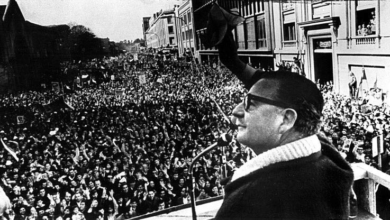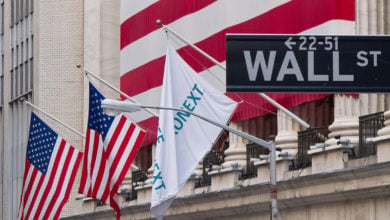Photo credit: Marco Verch
At the heart of the international economic order that allows U.S. capitalists to dominate the entire globe and accumulate vast wealth is their currency itself. When a government or enterprise in one country buys a key commodity like oil, wheat or microchips from another country, more likely than not they are making that purchase using U.S. dollars. In the accounts of central banks around the world, governments hold most of their prized currency reserves in dollars.
“De-dollarization” is a hotly-debated topic as more and more countries search for an alternative to this deeply unequal world currency system. Much of this has centered around proposals for the BRICS bloc — Brazil, Russia, India, China and South Africa — to launch a new currency for international trade that could rival the dollar. But for now, this remains a possibility, not an actuality.
The fact that the dollar reigns supreme as the “world reserve currency” is a crowning achievement of Washington and Wall Street. How did they pull it off?
Chaos in capitalist global trade
In the present day, key international institutions and practices — like the World Bank, International Monetary Fund, and “free floating” currencies whose values are determined by the market — are in place to help stabilize global capitalism in the interests of the big banks when the system falls victim to its own inherent boom-bust cycle. But these did not exist prior to the end of World War II.
Before the rise of the dollar, the British pound tended to be the currency of choice for international transactions. However, with the onset of the Great Depression the capitalist powers began competing with one another, each hoping to engineer a recovery of their own economy at the expense of the others.
They intentionally pursued policies that lowered the value of their own currency to boost exports and therefore stimulate desperately-needed economic activity. Enterprises in countries with more valuable currencies have an incentive to buy commodities produced in countries with less valuable currencies, which are comparatively cheaper. But this just created a cycle where each country tried to undercut the other by effecting deeper and deeper drops in their own currency’s value. Britain even stopped linking the value of its currency to the value of gold — “the gold standard” — in 1931. This made inflation worse and intensified the Depression.
The Bretton Woods conference
The outbreak of World War II further fragmented the global economy. As the war began to draw towards a conclusion, the powers on the winning side began an intensive series of debates and summits to determine the shape of the post-war world.
The United States was uniquely positioned to dominate this process because it was the only one of the big capitalist powers that had not been physically decimated by war. While cities across Europe and Asia lay in ruins, the United States was insulated from the devastation by the Atlantic and Pacific oceans, and its capacity for industrial production was unmatched. Because of this status as a relative safe haven, over the course of the war more and more of the world’s gold reserves were transferred to the United States — eventually amounting to 75 percent of the global total.
Instead of imposing a punitive policy on the rival empires it defeated, the U.S. government sought to revive all of the imperialist powers of the world and unite them under Washington’s leadership. This way, the main capitalist nations could work together to stop socialist revolutions, rather than wage war to take each others’ colonies, which increases the likelihood of socialist revolution. On the diplomatic and military front, this was achieved through institutions like the United Nations and NATO. Economically, this strategy was pursued with the World Bank, IMF and the newfound status of the U.S. dollar as the world reserve currency.
This was determined at a luxury hotel in New Hampshire. In the town of Bretton Woods, delegates from over 40 nations gathered in July 1944 for a summit. While negotiators from some countries of Africa, Asia and Latin America were present, the United States and Britain ran the show. One of the summit’s commissions laid out how the IMF would be set up and was led by top U.S. negotiator Henry Dexter White. Another commission creating the World Bank was led by the British economist John Maynard Keynes. When the institutions finally came into being, a gentleman’s agreement among the imperialists preserved this undemocratic arrangement, but in reverse: The World Bank would always be led by an American, and the IMF would always be led by a European.
Alongside the creation of the IMF and the World Bank, the Bretton Woods conference resolved to measure the value of all other currencies relative to the value of the dollar. Rather than accumulating gold that their own national currency could be exchanged for, countries would now accumulate reserves of U.S. dollars. The dollar, in turn, would be worth 1/35th of an ounce of gold. Only the United States with its vast reserves of gold could guarantee that anyone who wanted to exchange paper currency for this precious mineral could do so.
Even though a series of economic problems and the financial cost of the Vietnam War forced the U.S. government to abandon the gold standard in 1971, the dominance of its currency persisted. A world trading and financial order had already been set up premised on the world reserve status of the dollar.
Exercising the dictatorship of the dollar
The power of the U.S. empire alone is now what imbues the dollar with value instead of its convertibility into gold. And the reverse is also true: The authority of the U.S. government over the rest of the planet is exercised in large part through the power of the dollar.
The Federal Reserve is the only entity in the world that is able to print dollars — to simply decree this most valuable of currencies into existence. If other countries print enormous quantities of their own national currencies, its value will decline relative to the dollar. But because every country needs U.S. dollars, demand for the dollar remains relatively high almost no matter what, which helps offset any decline in its value that could have been brought about through massive spending. This power to spend well beyond the government’s actual income is put to use financing the Pentagon’s massive war budget and providing periodic bailouts of epic proportions to big banks and other corporate giants during periods of crisis.
The interest rate the U.S. government has to pay on its debt is held down by the world reserve status of the dollar. The government borrows money by having the Treasury Department issue bonds. Entities that buy Treasury bonds pay a certain amount of money up front, and then are repaid that amount plus interest over the course of a set period of time. One of the entities that buys these bonds are the governments of other countries, which hold much of their U.S. dollar reserves in the form of Treasury bonds. These countries need dollars to be able to trade on the world market, and the Treasury Department knows it. So the U.S. government can offer relatively low interest rates on these bonds, and other countries will purchase them anyway.
Finally, sanctions have emerged as a key weapon of U.S. empire, and their effectiveness is premised on the dollar-dominated world financial system. Most financial transactions between any two countries go through intermediary banks that have accounts with the U.S. Federal Reserve and thus can access dollars. If the U.S. government imposes sanctions on a nation or institution, then the intermediary banks can no longer get dollars to facilitate transactions involving the sanctioned entities. Nearly any type of international payment touches the Federal Reserve or Wall Street in one way or another, and the U.S. government can cut out any country that challenges its grip over the globe.
Considering all these unfair advantages secured by the U.S. capitalist class through their dominant currency, it’s no wonder that there are growing calls around the world for de-dollarization. But this discontent can be rooted in very different places. For other capitalist classes around the world, their opposition to the U.S. dollar is rooted in their desire to have their own national banks and corporations compete on a more equal footing. Dethroning the dollar would deal a blow to the global stature of the U.S. empire, and therefore improve the situation of the world’s poor and oppressed people, including those who live inside the United States. But the currency should not be confused for the capitalist system of production itself. For the international working class, the task is not only to get rid of the dollar’s dictatorship, but the vicious relations of exploitation that the dollar expresses.






